#and created another artificial intelligence (a more peaceful level-headed one) to destroy it.
Text
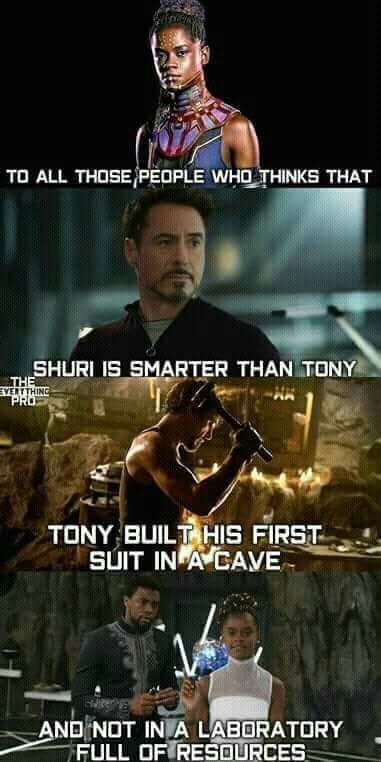
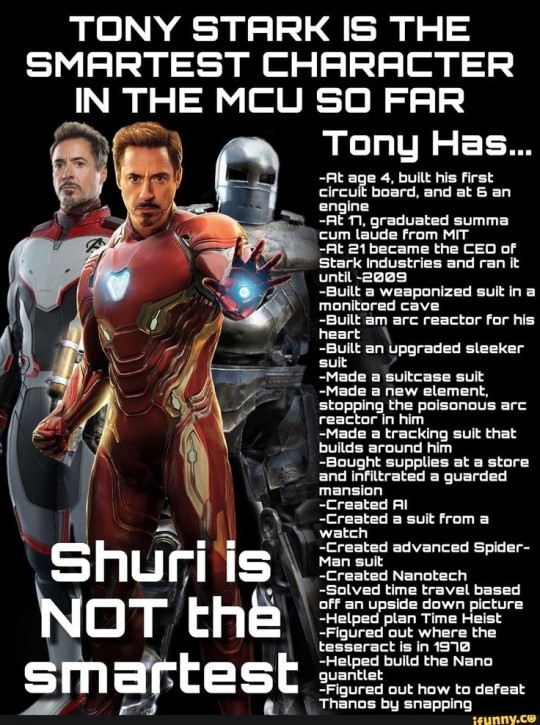
I love Shuri, but no one in the MCU is smarter than Tony.
#He created a genocidal artificial intelligence that almost led to the end of the world#and created another artificial intelligence (a more peaceful level-headed one) to destroy it.#He invented nanotechnology that allows the Iron Man suit to form around him from tiny nanites stored in his arc reactor.#He even invented a whole new element after following the clues left behind by his dad.#marvel#mcu#avengers#tony stark#iron man#shuri#shuri of wakanda
1 note
·
View note
Text
Power Rider Arcade

(Logo by Markolios and @riceyhot)
Years ago a team of programmers working for Magnus Games attempted to create the world’s greatest video game. It would be called EX-AID (Electric Xenosis- Adventure in Datatropolis). Part of what would make it so unique was that the game would learn and adapt to the player meaning no two playthroughs would be the same. Enemies would adapt to player techniques, the player’s characters would level up and adapt to the players style. Even the worlds would subtly adapt to the player. This system was called V.A.I (Virtual Artificial Intelligence)
The plot was that in the world of data and code existed a land called Datatropolis. The various worlds lived in peace with one another until the evil VAI attacked with his viral minions. A call went out from the capital city for help. A group of Heroes answered the call.
From the Hall of Heroes came Vic, the greatest of heroes (Action/Platformer)- “Let’s play a game! *item collection noise*”
From the Kingdom of Fantasy came Sir Valor, the noblest of knights (RPG)- “Let us go forth into battle! *swords clash*”
From the War Zone came Sargent Sniper, expert with all firearms (Shooting)- “Lock and load! *gun loads*”
From the racetrack of Velo City came Speedstar the fastest racer. (Racing)- “Race ya! *car speeds off*”
From the Sport Stadium came Athy Lete master of all sports (Sports)- “Let’s make it sporting! *crowd cheers*”
From the Institute of Intelligence came Eyeque, the host of the Premium Puzzle game show (Puzzle)- “Have I got a puzzle for you! *game show buzzer*”
From the Combat Arena came Champ, the strongest of fighters. (Fighting)- “Step into the ring! *bell rings*”
From Terror Town came the Night Mayor, ruler of horrors. (Horror)- “Behold the horrors of the night! *ghostly wail*”
From the Harmony Concert Hall came Melody, the most popular pop star (Music/Rhythm/Dancing)- “Time for the big show! *musical scale*”
These Heroes would unite to fight VAI and his forces.
However before the game was completed the budget ran out and the project was canceled. Two of the programmers began to delete the data, however when they tried to delete V.A.I he managed to escape it. Before it vanished V.A.I vowed revenge for being thrown away like garbage. As it escaped V.A.I managed to steal the data of many of the Heroes
When the pair tried to warn the others they were laughed off. So the two transferred the data of the remaining Four Heroes to a new computer should the day come that V.A.I returned.
In the meantime the pair married and opened an arcade. Soon they had a son they named Elliot and the threat of V.A.I seemed so far away.
However one day V.A.I returned with a vengeance. Having gained the ability to create viruses monsters called Virugs he launched his attack. While fleeing the first attack Elliot and two other teens found a hidden base under the arcade containing the computer with the data of the Four Heroes on it.
The programmers revealed the truth behind EX-AID and V.A.I to the teens who volunteered to fight back. And so the teens and the Heroes united to become Power Rider Arcade.
The Heroes act as avatars for the teens, giving helpful hints similar to a tutorial. In battle the teens would head to a location where the Virug virus has emerged and using the Avatars of the Heroes fight a monster until it crossed over into the real world at which point they transform into the Riders to defeat it once more to destroy it.
At first Elliot and the others clash due to conflicting personalities but eventually they unite to fight the true threat.
They would face many dangers including a dark warrior called Glitch who used data from some of the fallen Heroes to fight the Riders. Glitch is soon joined by Coder an enigmatic warrior who serves V.A.I as well.
Shortly after the defeat of Glitch it is revealed that the CEO of Magnus Games, Stan Magnus was behind V.A.I’s rebellion. Stan believed he could use V.A.I to conquer the world and the only ones who stand in his way are the Arcade Riders.
Soon after this revelation V.A.I creates and mass produces cartridges that allows normal people to become Game Riders and Stan sells these through Magnus Games. However in reality V.A.I is merely using them to increase the power of the Virugs by having them use the Game Riders as practice. Furthermore the Game Riders are turned against the Arcade Riders by telling them they were enemies in the “game” and to make matters worse if a Game Rider is defeated they die for real.
Special monsters called Power Up Pals (P.U.P) merge with the Riders to unlock new forms. In game the P.U.P were friends and allies with the heroes.
Energy Items are formed when the Virug emerges into the real world and grant different abilities Speed High Jump Health Confusion Metal Giant Muscle Tiny Invisible Hint
Digital Dragon- In game this mighty beast was the ancient protector of the land however V.A.I’s attack left it weakened so it created Totems for the Heroes to use. The Totems would bestow them with armor and power. However when V.A.I escaped the Dragon was thought lost so the programmers saved the Totems just in case



Arcade Player 1 “Warrior”-Vic Name: Elliot Booth
Age: 16
Personality/Bio: Elliot grew up in an arcade, as his parents were two of the original programmers working on Magnus Games' 'world's best video game', who eventually married and opened up an arcade. As a result of growing up in the arcade, he is a lifelong gamer. Perhaps because of his parents' dedication to deleting the data of the failed video game and stopping the spread of V.A.I., he is the Rider most dedicated to defeating V.A.I. when it's apparent that V.A.I. has returned for revenge. During V.A.I.'s first attack, Elliot and the other Riders discovered a hidden base underneath the arcade. His parents explained everything to them and they agreed to take up the mantle as Power Rider Arcade. As Power Rider Warrior, his personal weapon is the Smasher Slasher. His Hero aid is Vic. Elliot soon gains several new forms to defeat increasing threats.
Face Claim: Nathan Kress
Transformation Device: Player Belt
Transformation Call: Let’s Ride
Transformation: A field of binary code covers them forming the armor
Finishing Moves- Rider Warrior Smash/Slash/Kick/Punch
Vehicle: Speedstar

Powered Up Mode- After freeing a P.U.P named Punchbot, Elliot gains an armored form and a rocket fist
Finishing Move- Rider Power Punch
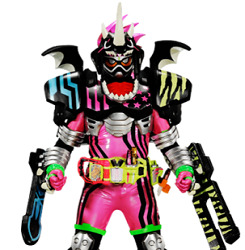
Digital Dragon Armor- Gains armor, sword, and blasters.
Finishing Move- Rider Warrior Dragon Slash/Shot
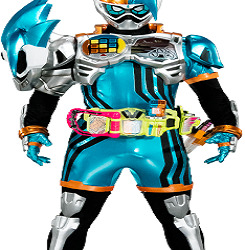

Super Mode- Multiplayer Mode- Vic and Elliot each control one Body in both Avatar and Rider mode. Rider mode splits into two, one controlled by Vic the other by Elliot.
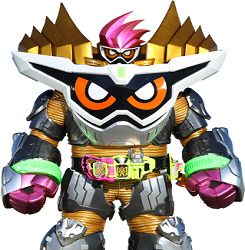

Final Mode- Victory Armor/Power - Two modes. Armor gains increased stats and Power grants temporary invincibility and the ability to permanently delete Virugs.
Finishing Move- Rider Victory Kick/Punch
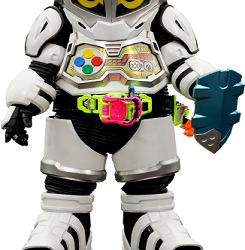
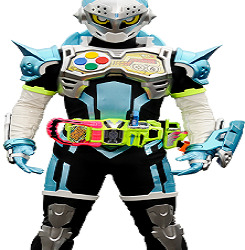

Arcade Player 2 “Knight”- Sir Valor Name: Harvey Ritter
Age: 16
Personality/Bio: Harvey is a bookworm and isn't afraid to let others know just how smart he is. He and Tara, Power Rider Soldier, don't get along due to a grudge between them, stemming from years ago. Harvey mostly keeps to himself, his nose always in a book, but Elliot, little by little, slowly brings him out of his more arrogant loner shell, making him a much better person later on. Eventually, due to the efforts of Elliot and Nicole, he and Tara resolve their grudge and patch things up. They don't quite become friends, but they recognize each other's strengths and weaknesses, both on and off the battlefield. His Hero aid is Sir Valor and his personal weapon, as Power Rider Knight, is the Sword of the Frozen Flame. Much like Elliot , he gains access to more powerful forms as the battles get tougher and tougher.
Face Claim: Kevin G. Schmidt
Transformation Device: Player Belt
Transformation Call: Let’s Ride
Transformation: A field of binary code covers them forming the armor
Finishing Move- Rider Knight Slash

Powered Up Mode- After freeing a P.U.P named DeeJay, Harvey gains sonic based attacks
Finishing Move- Rider Power Sonic Blast

Digital Dragon Armor- Gains armor, sword, and blasters.
Finishing Move- Rider Knight Dragon Slash/Shot
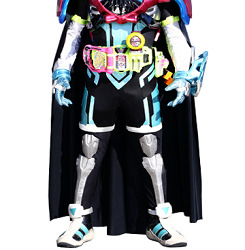
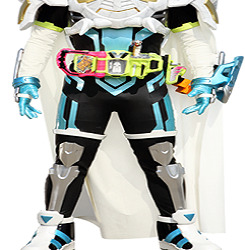
Super Mode- King Mode- Can summon an army of Virugs and channel great energy. At first King Mode is corrupted by the Virug virus however in time he manages to erase the virus leading to the True King Mode
Finishing Move- Rider King Judgement
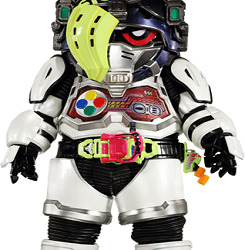


Arcade Player 3 “Soldier”- Sargent Sniper Name: Tara Katona
Age: 17
Personality/Bio: Tara is a girl living in the lap of luxury due to the wealth of her parents. Her parents spoil her and treat her like a princess, but in return, she hides her true self from them. Her true self is a tomboy who is quick to anger and who holds a long-standing grudge with Harvey. Eventually, she and Harvey reconcile and become more understanding of each other. She is a fierce protector of her friends, especially Nicole, whom she treats like her little sister. Her Hero aid is Sergeant Sniper and her personal weapon, as Power Rider Soldier, is the Sniper Pistol. As with Elliot and Harvey's powerups, Tara receives her own, allowing her to fight on par with them.
Face Claim: Nicola Peltz
Transformation Device: Player Belt
Transformation Call: Let’s Ride
Transformation: A field of binary code covers them forming the armor
Finishing Move- Rider Soldier Blast

Powered Up Mode- After freeing a P.U.P named TakeOff, Tara gains a jet pack and cannons.
Finishing Move- Rider Power Blast

Digital Dragon Armor- Gains armor, sword, and blasters.
Finishing Move- Rider Soldier Dragon Slash/Shot

Super Mode- Commander Mode- Gains a large amount of guns and blasters and can track and target any foe.
Finishing Move- Rider Commander Artillery

Arcade Player 4 “Biker”- Speedstar- Kyle (later)- At first Speedstar fights alongside the teens by being uploaded into a bike however during a battle with Glitch Speedstar’s Rider form is damaged beyond repair and must remain in his bike mode.
Transformation Call: Let’s Ride
Finishing Move- Rider Biker Rush

In his vehicle form Speedstar can reach incredible speeds in a short amount of time, however he lacks many of his attacks and cannot interact much.
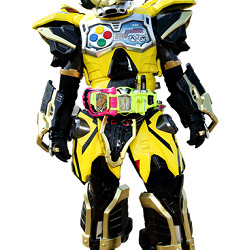
Powered Up Mode- After freeing a P.U.P named Sammy Rai, Speedstar gains a body to fight with
Finishing Move- Rider Power Arrow
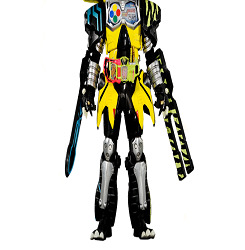
Digital Dragon Armor- Gains armor, sword, and blasters.
Finishing Move- Rider Biker Dragon Slash/Shot
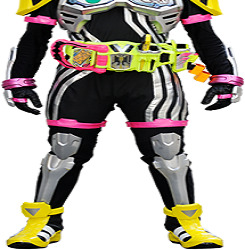

Name: Kyle Stevens
Age: 16
Personality/Bio: Kyle is a BMX biker and Elliot's best friend. They met on the first day of school and have been friends since. After his friend keeps disappearing, he decides to investigate. His investigation leads him to the Booth family arcade, where he discovers the hidden base of the Riders. Elliot makes Kyle promise to keep everything he's seen a secret, to which Kyle complies. Kyle eventually meets a newly repaired Speedstar, who asks him to fight alongside him as Power Rider Biker V2. At first, Kyle is a bit hesitant, not wanting to give up BMX biking in order to save the world, but Elliot manages to convince him that he can do both. Kyle finally accepts, knowing that if he wants to continue BMX biking, he must have a safe world to do it in.
Face Claim: Jaden Smith
Transformation Device: Player Belt
Transformation Call: Let’s Ride
Transformation: A field of binary code covers them forming the armor
Finishing Move: Rider Biker Rush

In this new form they are able to utilize Athy Lete’s data as Glitch once did Finishing Move- Rider Biker Discus
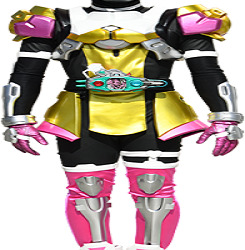

Arcade Player 5 “Dancer”- Melody Name: Ashley Sharp
Age: 17
Personality/Bio: Ashley is a cheerleader at the school Elliot and the others attend. As one of the popular girls, she tends to manipulate those around her into doing things for her, such as carrying her books to class and holding doors open for her. Due to her manipulation skills she is kidnapped by V.A.I. and brainwashed into fighting the Riders as Hacker. She is also used to distribute the Game Rider cartridges as part of V.A.I.'s bigger plan. She is eventually freed from her brainwashing through the great efforts of Elliot, to whom she feels a bit indebted for saving her. She joins the Riders as Power Rider Melody in order to fight against V.A.I. and prove that she's can become a much better person and prove V.A.I wrong.
Face Claim: Ashley Tisdale
Transformation Device: Player Belt
Transformation Call: Let’s Ride
Transformation: A field of binary code covers them forming the armor
Finishing Move- Rider Dancer Concert


Arcade Player 6 “Secret”- Tory Name: Drake Magnus
Age: 25
Personality/Bio: Drake is the son of Stan Magnus, CEO of Magnus Games. When he discovered the truth about his father and V.A.I, he stole a Rider Cartridge from him. This cartridge contained a hidden character, Tory, who is a palette swap of Vic. Tory allows Drake to transform into Power Rider Secret. Drake later uses reclaimed data from the Night Mayor game to upgrade his Rider form and can charge his attacks with dark energies.
Face Claim: Milo Ventimiglia
Transformation Device: Player Belt
Transformation Call: Let’s Ride
Transformation: A field of binary code covers them forming the armor
Finishing Move- Rider Secret Kick/Punch

When using the data of Night Mayor Drake can charge his attacks with dark powers.
Finishing Move- Rider Secret Horde
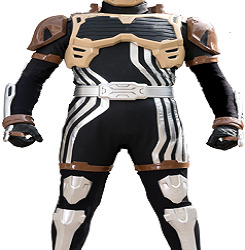

Name: Nicole Jimenez-Kalea
Age: 15
Rider Designation: Gamer Rider Personality: Headstrong, a little bratty, keeps cool under pressure, wary and shy around things that weird her out, unafraid to show her emotions, especially disgust or contempt
Bio: Nicole is a long time friend of Tara, and treats her like a big sister. She's a genius gamer and proud of it. Any time her winning streak is broken, she locks herself in a room for a few days and trains until she gets them back. But Nicole doesn't her idolization of "big sis" Tara stop her from bullying Tara into doing things like social interaction or beating up people that break her winning streaks. Nicole and Tara were practically glued at the hip since first grade, so when Tara started disappearing with Elliot and co more and more often, she followed them to figure out what they were doing with her "big sis." After learning the weird armored people running around town were Tara's friends, she promised to keep their secret, but she didn't keep her promise to stay out of danger. Nico follows them around on missions, cheering them on from the sidelines. She immediately buys a Gamer Rider cartridge when Magnus Games starts being distributing them. She proves her fighting prowess based on her gaming skills immediately and Tara grudgingly allows her to help out.
Face claim: Auli'i Cravalho
Transformation Device: Gamer Belt Transformation Call: Let’s Ride Transformation: A field of binary code covers them forming the armor Finishing Move- Game Rider Kick/Punch
V.A.I’s forces


Glitch- First warrior, as the battles continued V.A.I gave him data taken from Athy Lete and Night Mayor. Eventually destroyed and the data was retaken by the Riders.
Finishing Moves- Glitch Kick/Punch,
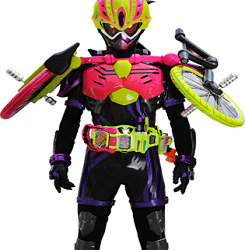
When using the data stolen from Athy Lete Glitch gains armor and throwing discuses
Finishing Move- Glitch Sport Slasher

When using the data stolen from Night Mayor Glitch gains a new form and the ability to survive mortal blows. His attacks are charged with dark energy
Finishing Move- Glitch Horror Assault
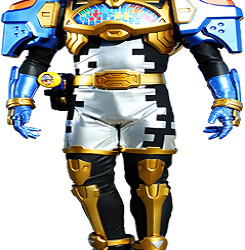
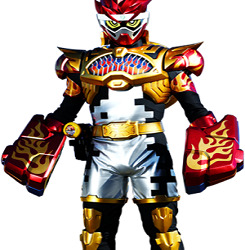


Coder- The second warrior created by V.A.I using the data from Eyeque and Champ. In Puzzle mode he can utilize energy items in unique combinations and in Fighter mode he gains fiery punches. He then gains the power to combine the two to form Combo mode.
Eventually he is betrayed by V.A.I and Magnus after outliving his usefulness. He is forced to defect to the Riders and his damage causes him to become an Avatar to assist Perry Peterson, a nerdy teacher from the school the teens attend.Perry then becomes Power Rider Scholar.
Name: Perry Peterson
Age: 30
Personality/Bio: Perry is a rather nerdy instructor at the school the Riders attend. After Coder is heavily damaged and betrayed, he defects to the Riders' side and becomes an avatar for Perry, who uses him to transform into Power Rider Scholar. As their teacher, and oldest of the heroic Riders, Perry watches over them both on and off the battlefield. He originally had no idea his students were the Riders until he received his powers and began fighting with them. His students discovered Power Rider Scholar's true identity after he finished fighting off a group of Virugs attacking a group of people. He de-transformed, but hadn't realized there were people watching him. After his students found out who he was, they were shocked, but Elliot invited him to fight with them, an invitation which Mr. Peterson accepted. If anyone asks what the group is doing, when they go off to fight Virugs and V.A.I.'s forces, Mr. Peterson says they're going to a Gamer's Club meeting, being held at the Booth family arcade.
Face Claim: Ben Savage
Transformation Device: Player Belt
Transformation Call- Let’s Ride
Transformation: A field of binary code covers them forming the armor
Finishing Moves- Coder/Scholar Quiz/Knockout
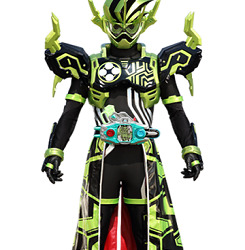
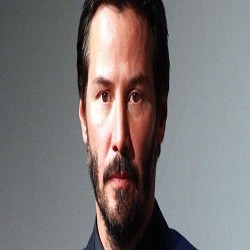
Mal Name: Stanley "Stan" Magnus
Age: 45
Personality/Bio: Stan began the war with V.A.I. when he helped the virus escape, intending to use it for world conquest. He was promised power and conquest by V.A.I., but is eventually betrayed after he outlives his usefulness. Stan becomes Mal and outfits his form with cheat codes in order to gain an advantage against the Arcade Riders. His advantage is erased, however, by the arrival of Elliot's Victory Power form. Stan is overtaken by V.A.I. after his betrayal, giving V.A.I. a physical body with which to personally fight the Arcade Riders. Stan is the CEO of Magnus Games and the father of Drake Magnus.
Face Claim: Keanu Reeves
Transformation Device: Player Belt
Transformation Call- Let’s Ride
Transformation: A field of binary code covers them forming the armor
Finishing Moves- Mal Crash

V.A.I- Virtual Artificial Intelligence- The virtual enemy that started it all. He was programmed to adapt and learn with each battle with the player, making each play though that much harder. However they programmed him too well and he gained sentience. He influenced Stan with promises of power and conquest only to betray him when he outlived his usefulness. V.A.I then took possession of his body to fight the Riders personally.

V.A.I- After his “rider” form is defeated he absorbs a large number of Virugs to mutate into his true boss form. This form is able to further mutate into a large monstrous form.
Power Rider Phantom/Arcade: The ghost of a video game programmer emerges across the internet and it’s up to the combined forces of the Phantom Rider and the Arcade Riders to exorcise the internet.
(Bios by @rosegrl18 and @highkickin-cylon)
Previous Powerverse Next
4 notes
·
View notes
Text
Just Cause 4
For me, Just Cause 4 was in the top ten expected games of 2018. Since the release of the first game on the PlayStation 2, I have loved this series for the freedom and dynamics of the gameplay, with each new part increased thanks to innovations, mainly tied to the hook-cat of Rico Rodriguez, the main character of the series. From the third part of the franchise began to change noticeably, adding serious notes to the previously crazy action, often devoid of meaning, logic and laws of physics. Actually, for which the series was loved by fans. But the degree of seriousness in Just Cause 3 was kept within the bounds of decency and did not destroy the cool atmosphere of madness — we had a charismatic dictator, not devoid of a sense of humor, a huge world and a wide Arsenal of tools of destruction.
From the fourth game it was quite logical to expect only the development of an established formula, and we got it. Partially. With the evolution of some game variables, unfortunately, others have noticeably degraded.
Looking back at the past, on the review of Just Cause 3, today's I wants to meet myself from the past and hit the head with a poker. Because the estimate is too high. But today's I also understand why this happened: against the background of the second part of the previous game looked and played much better, even despite performance problems. The new mechanics looked great and encouraged the player to use them. In Just Cause 4, the situation is different: new mechanics are curious, but experiments with them get boring after an hour or two, and you only return to balloons with boosters when you perform numerous and monotonous tests that make your eyes ripple. Finally, the game itself does not encourage the use of innovations.
Yes, the developers have tried to add some variety to the tasks that are set for the player, and now the mission to weaken the influence of the enemy in the region is not to destroy their bases, but to systematically capture them. On some bases, you need to disable and hack guns, on others-to steal drawings or weaken the protection, opening important rooms for passing with the help of specific models of cars, tanks and boats. But this is where all the diversity ends, because the mechanics of performing different tasks are still the same: find the switch — break the switch, find the generator-destroy the generator.
Story tasks and side activities in the game are tied to completely similar tasks, the variety of which is even more than in the previous parts of the series, but does not save you from the routine. Disabling switches and blowing up generators would be much more interesting if the developers had improved the artificial intelligence of their opponents, because in their current state, only some types of enemies pose a threat. And even then, not the biggest. A much more dangerous enemy of the player in Just Cause 4 is crazy physics, which can suddenly give out some stupid feint, turning the car over on an even spot or blowing up the helicopter from touching a tree branch with the rotor.
Helicopters in Just Cause 4 are your best friends, even though the body kit and weapons available to the player often don't match (for example, we see two types of projectiles and a machine gun, but we can only use one type of NUR and a machine gun). With them, you can perform most speed tests, clean up almost all the necessary enemy bases, and even destroy an enemy General trying to get away on a jet fighter. Yes, you can catch up with him by helicopter and shoot him. Not ask...
But it is worth paying tribute: the shooting in the fourth part is several goals higher than all previous releases in the series. Finally, Rico has learned to fire from the shoulder, which makes it much easier to aim and makes the control more comfortable. You can only praise the work on weapons and opponents. The hero's Arsenal grows as you progress, and each barrel now feels unique: different rate of fire, accuracy, alternative fire mode, reload speed, and so on. Worthily. Types of enemies also pleased — "Ghosts" and "Titans" can not only spoil the nerves of the player due to its elusiveness and strength of armor, respectively, but also send the invulnerable Rico to the next world.
Transport management has also improved, and all at once. The weight of the cars seems large, although they continue to be cardboard boxes, judging by the impact of game physics on them. Even tanks and armored personnel carriers take off here, like Chinese cars made of chocolate foil. Examples are in the video below! More pleasant than in Just Cause 3, was the management of air technology, but this is more due to its ease. But water transport is frustrating clumsiness, although it is most likely just quite realistic. Other things amuse: boats and jet skis sometimes feel good even on land. See for yourself:
There are also outright deterioration compared to Just Cause 3! For example, the tone of the project changed from casually playful and jaunty on "complex SSI", which has a negative effect on the atmosphere. The share of humor in the narrative and side activities has decreased, and attempts by some minor characters to dive into the pool of jokes ends with a painful blow on a newspaper spread out on the water. Alas, in Just Cause 4, there is no charismatic dictator, no cool boss battles, and most of the potentially cool moments are closed under a video lock. Seriously, instead of creating spectacular battles with the elements, the developers have translated all the "victory over bosses" in the format of videos. It turned out even worse than the battle with the final boss in Uncharted 3: Drake's Deception. And there are few things worse than her.
The plot of the game... Yes, someone will now say that the game Just Cause has never been, and so on. True, but the developers themselves decided to change this and tried to take the "new height", which they did not submit. And since Avalanche Studios themselves decided to bring the story of Rico Rodriguez to the forefront, they gave carte Blanche for appropriate criticism. But it is not worth much to crucify and complain about this, either, it is more expensive for yourself. In General, the story has a good potential, but little attention from the authors, who are constantly confused about the details, dates and events of the past.
Moreover, some of the game dialogs simply do not correspond to the events that follow them. For example, in one of the videos, Tom Sheldon, who decided to make peace with Rico and help his precious student, says: "I will lead", which causes an entertaining skirmish with references to the past. But he gets behind the wheel of an armored car, and Rico climbs in after him. And what do you think? The car, of course, is controlled by the player. Either we were temporarily given power over Sheldon, or the developers and writers again forgot to sync the project's cloud.
When performing tests in Just Cause 4, remember that most of the necessary vehicles for "through the ring on a particular vehicle" tests are located near the test itself. From a few meters to a couple of blocks. For example, if the marker indicates that the test at the top of the mountain requires riding through the ring on a motorcycle, do not rush to look for the bike and attach the balls to it, as I did-climb the mountain using a winch and you will surely find a bike waiting for you there.
As for the technical part and scripto, they are a good source of high mood. However, not when you once again can not get the local "fultons" or jet mini-engines of the hook to work humanly, and they begin to turn the raised objects against any logic. Unfortunately, there will be most of these situations. The Avalanche team came up with interesting chips, but it did not work to implement them in a human way, as well as to encourage players to use them. The entire game, story - wise, you can go through, almost without using hook modifications. So what's the point?! The variety of the "set it yourself" level has always worked in Just Cause, but before that, the game mechanics did not go beyond the daily combat comforts.
Even for most of the tests where you need to deliver a car to an island or the roof of a high-rise, it is much easier to use a cargo helicopter with a magnetic grip than to play with balloons that behave as inadequately as possible most of the time they are used. After completing half of the tests, of which there are more than four hundred, I met only two where it was necessary to use balloons. Here just came to the rescue modification for them, allowing you to control the direction of flight crosshair sight.
The moment just got into the video below, which also says a lot about the technical part, artificial intelligence, stupefied since Just Cause 3, and the gameplay in General:
However, I repeat - fans of the franchise will be more satisfied with the new game, because the basic gameplay is thoroughly prettier. Another thing is that game innovations are mostly meaningless, and if they are simply thrown out, Just Cause 4 will not lose anything. The weather conditions that Avalanche was so proud of look great and even work, but have a strictly plot-based meaning. Without the technology developed by the local dictator, Solis seems to have no tornadoes, no winter blizzards, no sandstorms, no rain and thunderstorms. I just want to start packing my bags and looking for air tickets! After clearing objects that control weather conditions, we can turn them on and off with a single button. What for? To complicate your life, for example.
And there is no need for more. Storm and Blizzard limit the field of view, once in them, the enemies become absolutely stupid and blind. And since computer idiots and so ... idiots, send their intelligence to negative values once again do not want to, because the game becomes not interesting. Tornadoes destroy some objects, but only in specific areas. As well as the storm does not go beyond its limits. It turns out that we can again subject to spontaneous rape already cleared and captured areas. What's the point?! Oh, deja vu…
1 note
·
View note
Text
Power Rider Arcade

(Logo by Markolios and @riceyhot)
Years ago a team of programmers working for Magnus Games attempted to create the world’s greatest video game. It would be called EX-AID (Electric Xenosis- Adventure in Datatropolis). Part of what would make it so unique was that the game would learn and adapt to the player meaning no two playthroughs would be the same. Enemies would adapt to player techniques, the player’s characters would level up and adapt to the players style. Even the worlds would subtly adapt to the player. This system was called V.A.I (Virtual Artificial Intelligence)
The plot was that in the world of data and code existed a land called Datatropolis. The various worlds lived in peace with one another until the evil VAI attacked with his viral minions. A call went out from the capital city for help. A group of Heroes answered the call.
From the Hall of Heroes came Vic, the greatest of heroes (Action/Platformer)- “Let’s play a game! *Item collection noise*”
From the Kingdom of Fantasy came Sir Valor, the noblest of knights (RPG)- “Let us go forth into battle! *Swords clash*”
From the War Zone came Sargent Sniper, expert with all firearms (Shooting)- “Lock and load! *Gun loads*”
From the racetrack of Velo City came Speedstar the fastest racer. (Racing)- “Race ya! *Car speeds off*”
From the Sport Stadium came Athy Lete master of all sports (Sports)- “Let’s make it sporting! *Crowd cheers*”
From the Institute of Intelligence came Eyeque, the host of the Premium Puzzle game show (Puzzle)- “Have I got a puzzle for you! *Game show buzzer*
From the Combat Arena came Champ, the strongest of fighters. (Fighting)- “Step into the ring! *Bell rings*”
From Terror Town came the Night Mayor, ruler of horrors. (Horror)- “Behold the horrors of the night! *Ghostly wail*”
From the Harmony Concert Hall came Melody, the most popular pop star (Music/Rhythm/Dancing)- “Time for the big show! *Musical scale*”
These Heroes would unite to fight VAI and his forces.
However before the game was completed the budget ran out and the project was canceled. Two of the programmers began to delete the data, however when they tried to delete V.A.I he managed to escape it. Before it vanished V.A.I vowed revenge for being thrown away like garbage. As it escaped V.A.I managed to steal the data of many of the Heroes
When the pair tried to warn the others they were laughed off. So the two transferred the data of the remaining Four Heroes to a new computer should the day come that V.A.I returned.
In the meantime the pair married and opened an arcade. Soon they had a son they named Elliot and the threat of V.A.I seemed so far away.
However one day V.A.I returned with a vengeance. Having gained the ability to create viruses monsters called Virugs he launched his attack. While fleeing the first attack Elliot and two other teens found a hidden base under the arcade containing the computer with the data of the Four Heroes on it.
The programmers revealed the truth behind EX-AID and V.A.I to the teens who volunteered to fight back. And so the teens and the Heroes united to become Power Rider Arcade.
The Heroes act as avatars for the teens, giving helpful hints similar to a tutorial. In battle the teens would head to a location where the Virug virus has emerged and using the Avatars of the Heroes fight a monster until it crossed over into the real world at which point they transform into the Riders to defeat it once more to destroy it.
At first Elliot and the others clash due to conflicting personalities but eventually they unite to fight the true threat.
They would face many dangers including a dark warrior called Glitch who used data from some of the fallen Heroes to fight the Riders. Glitch is soon joined by Coder an enigmatic warrior who serves V.A.I as well.
Shortly after the defeat of Glitch it is revealed that the CEO of Magnus Games, Stan Magnus was behind V.A.I’s rebellion. Stan believed he could use V.A.I to conquer the world and the only ones who stand in his way are the Arcade Riders.
Soon after this revelation V.A.I creates and mass produces cartridges that allows normal people to become Game Riders and Stan sells these through Magnus Games. However in reality V.A.I is merely using them to increase the power of the Virugs by having them use the Game Riders as practice. Furthermore the Game Riders are turned against the Arcade Riders by telling them they were enemies in the “game” and to make matters worse if a Game Rider is defeated they die for real.
Special monsters called Power Up Pals (P.U.P) merge with the Riders to unlock new forms. In game the P.U.P were friends and allies with the heroes.
Energy Items are formed when the Virug emerges into the real world and grant different abilities
Speed
High Jump
Health
Confusion
Metal
Giant
Muscle
Tiny
Invisible
Hint
Digital Dragon- In game this mighty beast was the ancient protector of the land however V.A.I’s attack left it weakened so it created Totems for the Heroes to use. The Totems would bestow them with armor and power. However when V.A.I escaped the Dragon was thought lost so the programmers saved the Totems just in case
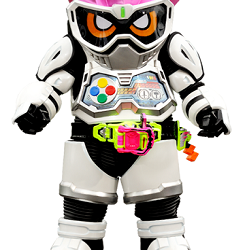
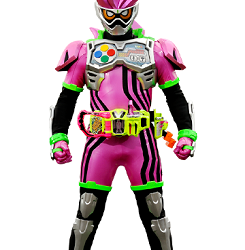

Arcade Player 1 “Warrior”-Vic
Name: Elliot Booth
Age: 16
Personality/Bio: Elliot grew up in an arcade, as his parents were two of the original programmers working on Magnus Games’ ‘world’s best video game’, who eventually married and opened up an arcade. As a result of growing up in the arcade, he is a lifelong gamer. Perhaps because of his parents’ dedication to deleting the data of the failed video game and stopping the spread of V.A.I., he is the Rider most dedicated to defeating V.A.I. when it’s apparent that V.A.I. has returned for revenge. During V.A.I.’s first attack, Elliot and the other Riders discovered a hidden base underneath the arcade. His parents explained everything to them and they agreed to take up the mantle as Power Rider Arcade. As Power Rider Warrior, his personal weapon is the Smasher Slasher. His Hero aid is Vic. Elliot soon gains several new forms to defeat increasing threats.
Face Claim: Nathan Kress
Transformation Device: Player Belt
Transformation Call: Let’s Ride
Transformation: A field of binary code covers them forming the armor
Finishing Moves- Rider Warrior Smash/Slash/Kick/Punch
Vehicle: Speedstar

Powered Up Mode- After freeing a P.U.P named Punchbot, Elliot gains an armored form and a rocket fist
Finishing Move- Rider Power Punch
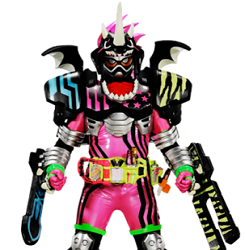
Digital Dragon Armor- Gains armor, sword, and blasters.
Finishing Move- Rider Warrior Dragon Slash/Shot


Super Mode- Multiplayer Mode- Vic and Elliot each control one Body in both Avatar and Rider mode. Rider mode splits into two, one controlled by Vic the other by Elliot.
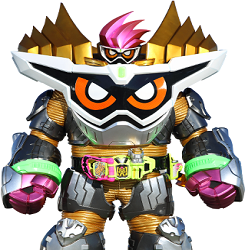
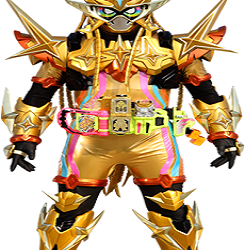
Final Mode- Victory Armor/Power - Two modes. Armor gains increased stats and Power grants temporary invincibility and the ability to permanently delete Virugs.
Finishing Move- Rider Victory Kick/Punch



Arcade Player 2 “Knight”- Sir Valor
Name: Harvey Ritter
Age: 16
Personality/Bio: Harvey is a bookworm and isn’t afraid to let others know just how smart he is. He and Tara, Power Rider Soldier, don’t get along due to a grudge between them, stemming from years ago. Harvey mostly keeps to himself, his nose always in a book, but Elliot, little by little, slowly brings him out of his more arrogant loner shell, making him a much better person later on. Eventually, due to the efforts of Elliot and Nicole, he and Tara resolve their grudge and patch things up. They don’t quite become friends, but they recognize each other’s strengths and weaknesses, both on and off the battlefield. His Hero aid is Sir Valor and his personal weapon, as Power Rider Knight, is the Sword of the Frozen Flame. Much like Elliot , he gains access to more powerful forms as the battles get tougher and tougher.
Face Claim: Kevin G. Schmidt
Transformation Device: Player Belt
Transformation Call: Let’s Ride
Transformation: A field of binary code covers them forming the armor
Finishing Move- Rider Knight Slash

Powered Up Mode- After freeing a P.U.P named DeeJay, Harvey gains sonic based attacks
Finishing Move- Rider Power Sonic Blast

Digital Dragon Armor- Gains armor, sword, and blasters.
Finishing Move- Rider Knight Dragon Slash/Shot
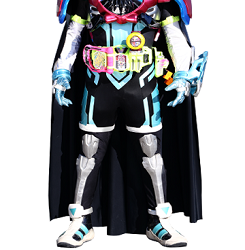
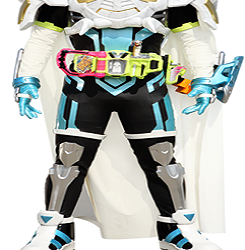
Super Mode- King Mode- Can summon an army of Virugs and channel great energy. At first King Mode is corrupted by the Virug virus however in time he manages to erase the virus leading to the True King Mode
Finishing Move- Rider King Judgement



Arcade Player 3 “Soldier”- Sargent Sniper
Name: Tara Katona
Age: 17
Personality/Bio: Tara is a girl living in the lap of luxury due to the wealth of her parents. Her parents spoil her and treat her like a princess, but in return, she hides her true self from them. Her true self is a tomboy who is quick to anger and who holds a long-standing grudge with Harvey. Eventually, she and Harvey reconcile and become more understanding of each other. She is a fierce protector of her friends, especially Nicole, whom she treats like her little sister. Her Hero aid is Sergeant Sniper and her personal weapon, as Power Rider Soldier, is the Sniper Pistol. As with Elliot and Harvey’s powerups, Tara receives her own, allowing her to fight on par with them.
Face Claim: Nicola Peltz
Transformation Device: Player Belt
Transformation Call: Let’s Ride
Transformation: A field of binary code covers them forming the armor
Finishing Move- Rider Soldier Blast
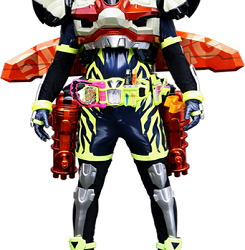
Powered Up Mode- After freeing a P.U.P named TakeOff, Tara gains a jet pack and cannons.
Finishing Move- Rider Power Blast
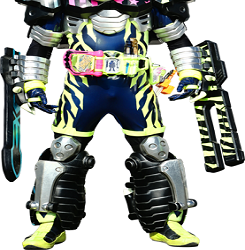
Digital Dragon Armor- Gains armor, sword, and blasters.
Finishing Move- Rider Soldier Dragon Slash/Shot
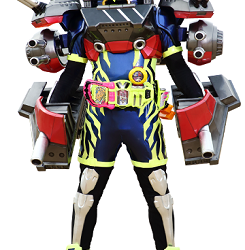
Super Mode- Commander Mode- Gains a large amount of guns and blasters and can track and target any foe.
Finishing Move- Rider Commander Artillery

Arcade Player 4 “Biker”- Speedstar- Kyle (later)- At first Speedstar fights alongside the teens by being uploaded into a bike however during a battle with Glitch Speedstar’s Rider form is damaged beyond repair and must remain in his bike mode.
Transformation Call: Let’s Ride
Finishing Move- Rider Biker Rush

In his vehicle form Speedstar can reach incredible speeds in a short amount of time, however he lacks many of his attacks and cannot interact much.
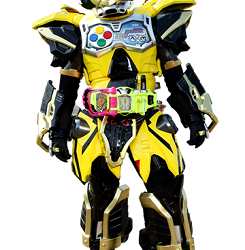
Powered Up Mode- After freeing a P.U.P named Sammy Rai, Speedstar gains a body to fight with
Finishing Move- Rider Power Arrow
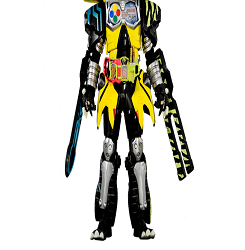
Digital Dragon Armor- Gains armor, sword, and blasters.
Finishing Move- Rider Biker Dragon Slash/Shot
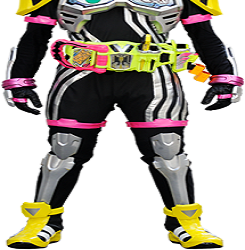

Name: Kyle Stevens
Age: 16
Personality/Bio: Kyle is a BMX biker and Elliot’s best friend. They met on the first day of school and have been friends since. After his friend keeps disappearing, he decides to investigate. His investigation leads him to the Booth family arcade, where he discovers the hidden base of the Riders. Elliot makes Kyle promise to keep everything he’s seen a secret, to which Kyle complies. Kyle eventually meets a newly repaired Speedstar, who asks him to fight alongside him as Power Rider Biker V2. At first, Kyle is a bit hesitant, not wanting to give up BMX biking in order to save the world, but Elliot manages to convince him that he can do both. Kyle finally accepts, knowing that if he wants to continue BMX biking, he must have a safe world to do it in.
Face Claim: Jaden Smith
Transformation Device: Player Belt
Transformation Call: Let’s Ride
Transformation: A field of binary code covers them forming the armor
Finishing Move: Rider Biker Rush
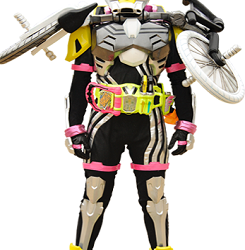
In this new form they are able to utilize Athy Lete’s data as Glitch once did
Finishing Move- Rider Biker Discus
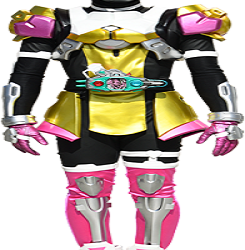

Arcade Player 5 “Dancer”- Melody
Name: Ashley Sharp
Age: 17
Personality/Bio: Ashley is a cheerleader at the school Elliot and the others attend. As one of the popular girls, she tends to manipulate those around her into doing things for her, such as carrying her books to class and holding doors open for her. Due to her manipulation skills she is kidnapped by V.A.I. and brainwashed into fighting the Riders as Hacker. She is also used to distribute the Game Rider cartridges as part of V.A.I.’s bigger plan. She is eventually freed from her brainwashing through the great efforts of Elliot, to whom she feels a bit indebted for saving her. She joins the Riders as Power Rider Melody in order to fight against V.A.I. and prove that she’s can become a much better person and prove V.A.I wrong.
Face Claim: Ashley Tisdale
Transformation Device: Player Belt
Transformation Call: Let’s Ride
Transformation: A field of binary code covers them forming the armor
Finishing Move- Rider Dancer Concert

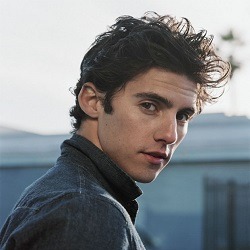
Arcade Player 6 “Secret”- Tory
Name: Drake Magnus
Age: 25
Personality/Bio: Drake is the son of Stan Magnus, CEO of Magnus Games. When he discovered the truth about his father and V.A.I, he stole a Rider Cartridge from him. This cartridge contained a hidden character, Tory, who is a palette swap of Vic. Tory allows Drake to transform into Power Rider Secret. Drake later uses reclaimed data from the Night Mayor game to upgrade his Rider form and can charge his attacks with dark energies.
Face Claim: Milo Ventimiglia
Transformation Device: Player Belt
Transformation Call: Let’s Ride
Transformation: A field of binary code covers them forming the armor
Finishing Move- Rider Secret Kick/Punch

When using the data of Night Mayor Drake can charge his attacks with dark powers.
Finishing Move- Rider Secret Horde


Name: Nicole Jimenez-Kalea
Age: 15
Rider Designation: Gamer Rider
Personality: Headstrong, a little bratty, keeps cool under pressure, wary and shy around things that weird her out, unafraid to show her emotions, especially disgust or contempt
Bio: Nicole is a long time friend of Tara, and treats her like a big sister. She’s a genius gamer and proud of it. Any time her winning streak is broken, she locks herself in a room for a few days and trains until she gets them back. But Nicole doesn’t her idolization of “big sis” Tara stop her from bullying Tara into doing things like social interaction or beating up people that break her winning streaks. Nicole and Tara were practically glued at the hip since first grade, so when Tara started disappearing with Elliot and co more and more often, she followed them to figure out what they were doing with her “big sis.” After learning the weird armored people running around town were Tara’s friends, she promised to keep their secret, but she didn’t keep her promise to stay out of danger. Nico follows them around on missions, cheering them on from the sidelines. She immediately buys a Gamer Rider cartridge when Magnus Games starts being distributing them. She proves her fighting prowess based on her gaming skills immediately and Tara grudgingly allows her to help out.
Face claim: Auli'i Cravalho
Transformation Device: Gamer Belt
Transformation Call: Let’s Ride
Transformation: A field of binary code covers them forming the armor
Finishing Move- Game Rider Kick/Punch
V.A.I’s forces


Glitch- First warrior, as the battles continued V.A.I gave him data taken from Athy Lete and Night Mayor. Eventually destroyed and the data was retaken by the Riders.
Finishing Moves- Glitch Kick/Punch,

When using the data stolen from Athy Lete Glitch gains armor and throwing discuses
Finishing Move- Glitch Sport Slasher

When using the data stolen from Night Mayor Glitch gains a new form and the ability to survive mortal blows. His attacks are charged with dark energy
Finishing Move- Glitch Horror Assault
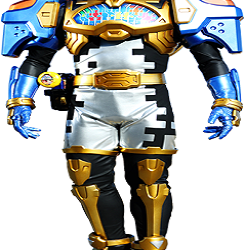
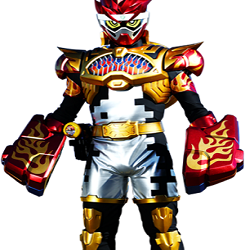
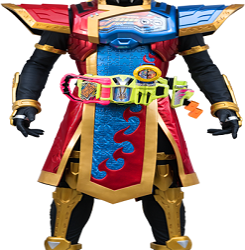

Coder- The second warrior created by V.A.I using the data from Eyeque and Champ. In Puzzle mode he can utilize energy items in unique combinations and in Fighter mode he gains fiery punches. He then gains the power to combine the two to form Combo mode.
Eventually he is betrayed by V.A.I and Magnus after outliving his usefulness. He is forced to defect to the Riders and his damage causes him to become an Avatar to assist Perry Peterson, a nerdy teacher from the school the teens attend.Perry then becomes Power Rider Scholar.
Name: Perry Peterson
Age: 30
Personality/Bio: Perry is a rather nerdy instructor at the school the Riders attend. After Coder is heavily damaged and betrayed, he defects to the Riders’ side and becomes an avatar for Perry, who uses him to transform into Power Rider Scholar. As their teacher, and oldest of the heroic Riders, Perry watches over them both on and off the battlefield. He originally had no idea his students were the Riders until he received his powers and began fighting with them. His students discovered Power Rider Scholar’s true identity after he finished fighting off a group of Virugs attacking a group of people. He de-transformed, but hadn’t realized there were people watching him. After his students found out who he was, they were shocked, but Elliot invited him to fight with them, an invitation which Mr. Peterson accepted. If anyone asks what the group is doing, when they go off to fight Virugs and V.A.I.’s forces, Mr. Peterson says they’re going to a Gamer’s Club meeting, being held at the Booth family arcade.
Face Claim: Ben Savage
Transformation Device: Player Belt
Transformation Call- Let’s Ride
Transformation: A field of binary code covers them forming the armor
Finishing Moves- Coder/Scholar Quiz/Knockout

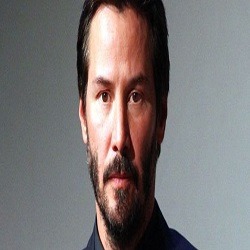
Mal
Name: Stanley “Stan” Magnus
Age: 45
Personality/Bio: Stan began the war with V.A.I. when he helped the virus escape, intending to use it for world conquest. He was promised power and conquest by V.A.I., but is eventually betrayed after he outlives his usefulness. Stan becomes Mal and outfits his form with cheat codes in order to gain an advantage against the Arcade Riders. His advantage is erased, however, by the arrival of Elliot’s Victory Power form. Stan is overtaken by V.A.I. after his betrayal, giving V.A.I. a physical body with which to personally fight the Arcade Riders. Stan is the CEO of Magnus Games and the father of Drake Magnus.
Face Claim: Keanu Reeves
Transformation Device: Player Belt
Transformation Call- Let’s Ride
Transformation: A field of binary code covers them forming the armor
Finishing Moves- Mal Crash

V.A.I- Virtual Artificial Intelligence- The virtual enemy that started it all. He was programmed to adapt and learn with each battle with the player, making each play though that much harder. However they programmed him too well and he gained sentience. He influenced Stan with promises of power and conquest only to betray him when he outlived his usefulness. V.A.I then took possession of his body to fight the Riders personally.
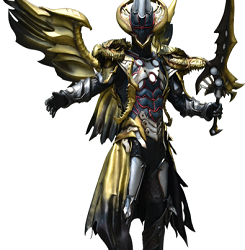
V.A.I- After his “rider” form is defeated he absorbs a large number of Virugs to mutate into his true boss form. This form is able to further mutate into a large monstrous form.
Power Rider Phantom/Arcade: The ghost of a video game programmer emerges across the internet and it’s up to the combined forces of the Phantom Rider and the Arcade Riders to exorcise the internet.
(Bios by @rosegrl18 and @highkickin-cylon)
Previous Powerverse Next
1 note
·
View note
Text
It Wasn’t Until (Jyn Erso Appreciation Week Day 2)
Day 2 Prompt: Luxury
Summary: Five times Jyn redefined “Luxury” in her life.
Words: 1559
AO3 / Below the Cut!
(1) Coruscant:
“Galen, that’s too much of a luxury,” Mama chastised when Papa brought home a crystal from his work. “I know how important those crystals are to your work. I couldn’t possibly take them away from you.”
“It’s a reminder to me,” Papa assured her, drawing her into his arms. “Of how important you are to me. You and Jyn. I’ve gotten too absorbed in the work, Lyra, and I’m sorry.” He ran a thumb over her cheek lovingly. “You two are the real luxuries in my life. If everything else was taken away from me, but you remained, I would have all the luxuries I need.”
As Papa pulled her even closer, Jyn shrank back around the corner, back into her bedroom. She may only be five, but she understood when some moments between Mama and Papa were private, just for them. Besides, she felt safe hearing her Papa’s words. He had been distant for a while, always reading and writing and locked away in his study for hours on end. Jyn had missed him then. But Papa said it himself: she and Mama were the luxuries in his life, even more than the crystals her parents argued over so often.
Mama and Papa tucked her into bed that night – the shining crystal now hanging around her mother’s neck – Jyn snuggled into her blankets, content and secure in her parent’s love.
It wasn’t until Lah’mu that Jyn learned having her parents was a luxury.
(2) Onderon:
“We don’t have the luxury of mourning the dead, Jyn,” Saw told her when he found her with tear tracks across her face. She was only ten – or was it eleven now? She hardly celebrated her lifeday with the Partisans – but she gripped a knife tight in her right hand. Blood dripped down its blade, staining her wrist and her conscious. She’d killed the Imperial sympathizer attacking Saw’s cadre, but not before she’d seen men and women she knew shot down and stabbed.
Those people raised her, those people knew her, and they were gone in an instant. Saw didn’t want to speak of them – not how they’d lived nor how they’d died.
“We must move forward, Jyn,” he’d said. “We must focus our efforts on the future and not on the past.”
She remembered his words as she grew into her anger and her truncheons. Luxuries like Maia’s gloves were few and far between in the fight against the Empire; wasting them on missing those who would never return – and she counted her parents among those number – was senseless.
Still, when the nights stretched on after gruesome skirmishes, Jyn could not stop the thoughts of those she loved and those she never knew parading across her mind. She reminded herself of the benefit of Saw’s stoicism and asceticism. Put away the luxuries, she told herself, and this life will be easier.
It wasn’t until she sat alone and scared in a bunker that Jyn realized the luxury was not mourning other people’s deaths; luxury was having people to mourn yours.
(3) Garel:
Jyn lifted her shirt to examine the bruise blossoming there. Less than half an hour old, and thick streams of purple and blue ran across her rib cage and down to her stomach. Several weeks of forced starvation – merely the scraps of meals others had thrown away had been her only nourishment – weakened the muscles Jyn depended on to guard her ribs; without them, they shattered like pottery, as evident by the harsh burn that accompanied every breath.
She closed her eyes and willed herself not to think of others she wished would be there. Her mother, with a soothing voice and gentle hands. Her father, with his in-depth knowledge of what would ease her pain. Saw and countless Partisans who could use the local products to create a homemade cure just as effective as the ones sold on the upper levels of Coruscant.
With a grunt, Jyn ran her hands over the wounds, inspecting the damage done in her most recent bar fight. She pictured the bounty hunter whom she’d angered had credits to spare for the luxury of a medic or a warm meal or a safe place to rest their head. At the beginning of the fight, Jyn imagined the outcoming would be buying her those luxuries for the evening, instead of the rough floor of the cave she now laid on, away from civilization and those willing to help her. She chewed on moss and took shallow breaths, telling herself she was content with this, that in a few days she would be healed enough to find another bounty hunter – or a smuggler, Jyn wasn’t picky – with the credits to get her off this Force forsaken rock.
Until then, if only the smells of fresh meat would stop wafting in from the local village; if only her head had a more comfortable place to rest…
It wasn’t until Wobani that it occurred to Jyn that even the ability to breathe was a luxury all its own.
(4) Eadu:
“We don’t all have the luxury of deciding when and where we’re going to care about something,” Cassian snarled at her as the ship raced through hyperspace, away from her father’s corpse and back to the people who’d killed him.
Her thoughts tangled into knots as she and Cassian, their anger finally spent, retreated to two separate sections of the ship.
Her father was dead. Cassian had orders to shoot him. The Death Star was real. The Death Star needed to be destroyed. We don’t all have the luxury of deciding when and where we’re going to care about something.
She scoffed. What did Captain Cassian Andor of Rebel Intelligence know about luxury? He didn’t stay to deal with the chaos caused by his assassinations; he didn’t live amid Imperial occupation, like the Guardians; he knew a safe place to rest his head awaited him at Yavin 4 when he returned from a mission. He even had the luxury of companionship, even if it was a reprogrammed Imperial droid filling that role.
These rebels struck and ran, too cowardly – or was it diplomatic? – to face the Empire head on in a war.
But as a group gathered around the Captain in the hanger of Yavin 4, offering themselves – their skills, their positions within the Alliance, likely their own lives – to retrieve the Death Star plans, Jyn found herself shocked. These rebels understood the price of sacrifice. Like the members of Saw’s cadre, they had lost their brothers and sisters in arms. Tragedy had struck their lives in some way in another, turned them away from the Empire and into the arms of the Alliance. More than that, they believed in what they were fighting for with a passion that Jyn herself had once had, though the flames of her belief had dulled to embers over her years of struggle.
Jyn found herself respecting the soldiers that gave up the luxuries of Yavin base to follow her on the deathly mission to retrieve the plans for a planet killer.
It wasn’t until the sky of Scarif was awash with artificial light that Jyn truly understood being a soldier of the Alliance didn’t mean living a life of luxury.
(5) Aria Prime:
A cry broke through the air. With a grunt, Jyn opened her eyes to glance out the window. The sky was still dark without even a hint of the sun on the horizon.
“That’s the third time tonight,” Cassian groaned beside her, his arm warm around her waist. “Do you think she’s sick?”
“I don’t think so,” Jyn murmured as she pulled herself up. “Just uncomfortable.”
Or, Jyn considered as she pulled her daughter out of her crib, Lyra was merely taking advantage of the luxury of having her parents nearby, reading and willing to dote on her at a moment’s notice. After all, Jyn would have taken advantage of that luxury for many more years if she’d been given the chance.
“You don’t have to get up,” she assured Cassian, who was leaning out of bed to grab a shirt.
He shook his head, coming to join her. “I don’t want to leave this all on you.”
They paced the length of the house, cuddling their daughter close to their chests, rocking and soothing their hands over her back. The sun just peaked its way over the horizon as Lyra’s eyelids fluttered closed. Once Cassian laid her back down in her crib, Jyn’s head fell to his shoulder.
“Let’s hope she lets us sleep for a while now.”
Cassian chuckled, placing a kiss on her forehead and leading her back to their bed.
As they fell asleep, Cassian’s steady heartbeat echoing in her ears, Jyn considered how even the idea of a roof over her head while she slept was a luxury for so long in her life. Now, it was the everyday normal. Pillows fluffed just the way she liked them; Cassian’s delicious cooking multiple times a day; Lyra’s loving coos and eager smiles: though Jyn saw them daily, she vowed she would never take these luxuries for granted.
It wasn’t until the war was won and the galaxy free of the hold of the Empire that the true luxuries of life – love, peace, comfort – became a regular part of Jyn’s life.
#jynweek#kat writes#therebelcaptainnetwork#rebelcaptainficrec#Jyn Erso Appreciation Week#jyn erso defense squad#jyn erso#Cassian andor#the crew#galen erso#lyra erso#saw gerrera#rogue one#star wars
26 notes
·
View notes
Text
Mass Effect: The Next Generation
Episode 1: Remnant of a Dead God
This is an extensive crossover that draws characters and concepts from multiple sci-fi and even fantasy franchises and integrates them into the Mass Effect universe. No prior knowledge of anything but ME should be necessary to follow the story. This is absolutely a sequel story about the galaxy after the end of Mass Effect 3. New characters, new conflicts. I hope you can fall in love with them as much as I have.
Rating: M - language, violence, sexuality
Summary: 100 years after the Reaping and the Crucible Event, the galaxy is rebuilding into a new golden age. As optimistic as times seem, the darkness between stars threatens to return in the form of infighting between the remaining Reapers. The Shadow Broker silently pulls strings across the galaxy to guard against the Reapers’ infighting, but even she can’t end this alone. When bounty hunter and synthetic-organic symbiote Samus Aran is called on to investigate a Reaper’s mysterious death, she discovers truths about the Reapers’ motivations and the century-old Crucible that could end the civil war–or ignite it into another Harvest.
Scene 1: The Shadow Broker’s Warning
It has been one century since the Crucible Event ended the Reaping. Commander Shepard entered the Citadel and never returned; our only knowledge of what happened in the Crucible comes from her final transmission, and from the Reaper that burst through the Citadel’s mass relay, just before the Event. This Reaper, of a unique design and incredible power, attacked Harbinger, the leader of the Reapers, and bought Shepard enough time to trigger the Event.
In the century since the Event, the civilizations of the galaxy have rebuilt. We have not only survived; we have thrived. The alliances and friendships forged in the fires of war remain strong. The krogan, quarians, and geth have rejoined the Citadel community, as have the batarians of the Khar’shan Republic, which rose from the ashes of the Hegemony. The Citadel Defense Fleet of the Reaping has become the new right hand of the Council, Starfleet. It is an interstellar, multispecies peacekeeping armada, and it is the pride of the galaxy. The Spectres are the left hand, a shadow organization that goes where Starfleet cannot. Synthetic life is easier than ever before to create, and the precedent set by EDI of the Normandy carries through in Starfleet and the Spectres. Many ships now have their own minds and wills, and are as much part of the crew as any organic. The Reapers have vanished from the sight of the galaxy, and many believe they simply retreated back to dark space, defeated.
But I know the truth. The peace we fought so hard for is not so easily held. The Reapers are not gone, but they are no longer Reapers. They are fractured, fighting among themselves for direction and purpose. My Shadow Network watches this civil war and, when we can, we strike to turn the tide in our favor. From the void of space, my beloved and I pull the strings of the galaxy and weave the future we never stopped fighting for.
Even the Shadow Broker is not omniscient, however … and some strings tangle so easily.
Scene 2: The Dead God’s Dream
Khar’shan, like Earth, only has one moon. It’s not the only way in which the two planets are similar; indeed, they’re nearly twins, despite the Sol system and Earth being a fair distance further into the galaxy. According to Varia’s historical codex, that’s why the batarians and humans used to fight over planetary territory--both sides wanted to colonize the same planets. Now, however, the two species are firm allies. In the aftermath of the Reaping, they realized they actually could colonize the same planets and coexist peacefully.
Samus Aran thinks it’s a little ridiculous that a near-total genocide of the batarian species was required for that realization to occur. Why didn’t they co-colonize before?
The Hegemony believed all non-batarians were inferior and only good for enslaving. The humans did not react well, Varia tells her.
Varia is a living starship. That’s the common term for the ships that contain quantum artificial intelligences, at least; to Samus, she is far more than simply a ship. She is an entity on her own terms. She’s not large, just barely smaller than a military frigate, but she has a powerful drive core, three different gun types and a cyberwarfare system, and a stealth drive--and she can use them all without her pilot. With Samus, locked into the piloting pod, they react faster and with more creativity than any single ship. Even the Starfleet helmsmen, who all pilot living ships, couldn’t hope to match them.
Helmsmen have to tell the ship to move; Samus and Varia move together.
They can converse while flying, but that is only one level of the mind. On all others, they think as one, combining Varia’s formidable processing power and Samus’s nimble, inventive turian brain. Greater than the sum of their parts.
The moon of Khar’shan is a barren rock, devoid of life and even an atmosphere. The old Batarian Hegemony, over a hundred years ago, once had a military base here. Now the base is a hollow ruin on the other side of the moon. It’s not why they’re here. There’s something else far more interesting. So far it hasn’t shown up on the scanners as the ship skims over the rock, but they’ll find it. Something this big can’t hide for long.
Have the batarians sent anything up yet? Samus asks. We don’t want to be here if they start sniffing around.
Nothing yet, Varia informs her. Her scan of batarian extranet conversations and military communication takes but fractions of a second, almost instantaneous. They’re talking about the light show around the moon last night, but nothing in the military is considering it enough of a threat.
Hardly surprising. The Khar’shan People’s Republic is barely spacefaring right now; a few unscheduled fireworks aren’t going to rate as much of a concern. According to Watcher 21, the Shadow Net agent who gave them the job, at around 0100 Khar’shan time, there was a sudden explosion of red and green light in the sky, centered around the moon. Twelve hours later, the batarians are discussing the phenomenon with great interest. The Shadow Broker, who heads up the Net, shares their interest.
“According to the Broker,” Watcher 21 had told them in his funny Earth-human accent, “those lights had unique energy signatures. Only one group of creatures is known to have those signatures--Reapers. That’s why we’re hiring you. If there’s a destroyed Reaper around the moon, we need to know why it was there and what it was doing. Any organic around a Reaper risks indoctrination. Yes, even when the Reaper is dead,” he added, anticipating the question. “A synthetic-organic symbiote like you and Varia, however, is immune. And you’re used to, you know, dangerous situations.”
Dangerous situations are landing on a rachni planet to obtain a queen egg, being attacked by pirates on that planet, and having to storm a pirate dreadnought alone to regain the egg. Dangerous situations are leaving the rachni egg on another toxic planet, having the egg hatch and imprint, and wind up with a baby rachni follower for a while. That was a weird few days. None of those dangerous situations involved dead starship gods.
The short-range scanner’s visual flashes red. Focusing on the red reveals a large mechanical strut--no, not a strut. A leg. It looks like a giant finger, half-buried in the rock, cut cleanly from its hand. Samus leans forward in her seat, even though she can zoom by thought alone. “Spirits,” she breathes aloud.
More red fingers appear on the scanner visual. One is sticking straight up from the ground, as if to point at the sky above. Surrounding the fingers are scorch marks and, more impressively, small canyons and large craters. “There was a fight here,” says Samus, flicking the visual from highlight to highlight. “But if these are the legs…”
“The body must be nearby,” finishes Varia. “The extent of the damage indicates at least two Reapers were involved in the struggle. Likely more.”
“Reapers right above Khar’shan, and nothing’s happened on the planet surface. I do not like this.”
Continue on AO3
3 notes
·
View notes
Text
Education in Two Worlds: Work, Play and the Loss of Relevance
Education in Two Worlds: Work, Play and the Loss of Relevance
William Doyle is a Rockefeller Resident Fellow and a Fulbright Scholar who spent time recently at the University of Eastern Finland. When he returned to New York City, he went in search of a Finnish-style public school and found it. It is called The Earth School. The experience started him thinking about things like work and play and schools and what education should be about. He wrote me a letter to which I have cobbled together a reply below.
First, Bill's letter:
Dear Gene,
I am enjoying reading about your fascinating, essential work in education. I am co-authoring a book with Pasi Sahlberg on the need for more play in school from pre-K through age 17. We are defining “play” as regular periods of freedom, choice and intellectual and physical play, both structured and unstructured, and both indoors and outdoors.
May I ask you 3 questions for our book?
What is the importance of play in childhood education?
How would you characterize the current state of play in school (pre-K through age 17)?
What specific recommendations might you have for integrating play, both indoors and outdoors, into the "schools of tomorrow"?
Thank you very much for considering this!
With appreciation, Bill
Bill continued:
“My child now goes to PS 364, also known as the Earth School, a little-known gem of a public K-5 elementary in the East Village.
“The student population is some 50% black and Latino children. Half the students qualify for free and reduced priced lunch, and 23% of students receive special education services.
“If American teachers built a school, instead of politicians and bureaucrats, it would look a lot like this. Founded as an experimental program in 1992 by a group of New York City teachers who wanted, in the words of the school’s website, “to create a peaceful, nurturing place to stimulate learning in all realms of child development, intellectual, social, emotional and physical,” the Earth School is guided by the values of “hands-on exploration, an arts-rich curriculum, responsible stewardship of the Earth’s resources, harmonious resolution of conflict and parent-teacher partnership.
“While 'working rigorously in literacy and math' the students are encouraged “to explore, experiment, and even sometimes make a mess in the pursuit of learning.”
“The atmosphere of the school is one of warmth and safety. Teacher experience is prized here — the principal, Abbe Futterman, was one of the founding teachers of the school a quarter-century ago, and many other staff members have worked here for at least five or 10 years.
“Children at the school are assessed every day, not primarily by standardized tests — the majority of parents opt their kids out of state exams — but by certified, professional childhood educators who provide the ultimate in “personalized instruction”: the flesh-and-blood kind.
“Children at the school learn in part through play in the early years. They are encouraged to ask challenging questions and think for themselves. They are encouraged toto be creative and compassionate, and to make their own decisions. Children get unstructured, free-play outdoor recess in the big play yard most days.
“Like employees at Google who are given 20% of their time to devote to projects of their own choice, children are given a free afternoon every week to pursue their own self-chosen 'passion projects.'
“In a striking innovation I especially appreciate, parents are actually invited into the school and directly into the classrooms for the morning drop-off, and given a room in the heart of the schoo, to relax, chat and plan much-needed school fundraisers.
“The school is not perfect, and it is not for everybody. If you’re looking for universal iPads, data walls, digital learning badges or boot-camp behavior modification in your child’s classroom, you won’t find them here.
“But somehow, this oasis of child-centered, evidence-based childhood education has managed to survive and flourish for a quarter-century in the heart of the New York City public school system.
"If it can happen in New York City, it can happen everywhere. If we ever get over our love affair with testing, anything is possible. Even a normal childhood.
Bill's experiences gave me an opportunity to unburden myself of several grievances that have been brewing inside for some time.
Bill
First, the false opposites of WORK – PLAY confound thinking. Indeed, the puritanical attitude toward play is widespread, to the detriment not only of schooling but to all of life. If work aims to build, create, solve, or contribute, play cannot be any of these things. At best it is rest, necessary for future bouts of work. Virtually everything is wrong with this way of thinking. And it is a shame that it permeates all levels of the education system.
Let me focus on two things that are wrong: 1) play can lead to development of many kinds; 2) work is rapidly disappearing.
The idea that play is a state of being in which serious cognitive processing are turned off for the duration is simple nonsense. Such an idea harkens back to naïve thinking of fifty years ago about “culturally deprived” [minority] children. Persons who should have known better conceived of urban minority children existing in a state of suspended animation in which their minds were completely unengaged because of a lack of “inputs.” This was and is absurd, of course. When a person appears to be unconnected in a cognitive and conative way, it is simply that the observer is ignorant of what is going on in that person’s mind. That observers cannot conceive of what is going on in the mind of a child who is “at play,” does not mean that that child’s mind is not involved in complex and indelible learnings.
My colleague at Arizona State, James Gee, has spent a good deal of effort studying [working on] how children’s thinking is shaped by playing video games. If you haven’t seen his work, take a look at his Wikipedia page.
Personally, I see a lot of problems with video games. It’s not that children don’t learn a host of important things while playing them; it’s that I have real reservations about turning children over to the control of game developers – whose goals are basically commercial. Plus, I’m seeing too many of my own grandchildren opting for the screen in their bedroom rather than their age-mates outside the home. There are things to learn there too.
Secondly, the prejudice against play is shot through the education system. And it is just getting worse. Increasingly children are viewed as future employees of corporations who must be trained – at public expense – to contribute to the corporation’s bottom line. Standards and goals and tests are the instruments of production of the workforce of tomorrow, and they have infiltrated all the way down to kindergarten. Academics spin out 1,500 math objectives guaranteed to produce a high school graduate who can code for Facebook.
There are several things wrong with what has happened to our schools in relation to the WORK – PLAY dichotomy.
Why should the public pay for the training of workers for the corporations? The threat that untrained high school graduates will be unemployable is ridiculous. The vast majority of jobs involve brief training that is so particular to a time and place that it makes no sense to attempt it to a broad population of school children. Furthermore, the corporations’ wish to push job training off onto public schools is just another recessive tax passed to the general public. The corporations benefit from trained workers; they should train them themselves.
But worse than conceiving of all education as merely job/career education – as is increasingly happening – is simply closing one’s eyes to the inevitable disappearance of work. It is almost impossible to get people of all sorts to conceive of a world without work, and yet, everything is headed to exactly that end. Robotics and artificial intelligence are destroying jobs. Machines and electronic processors are replacing human beings who engage in work. Even Facebook’s Zuckerberg recently opined that tens of millions of jobs will become obsolete in a few decades. People who hear this find it incomprehensible. They say that there will be jobs for people to code the processors and build the machines. Yes, one person in ten thousand will do such work. But what about the other 9,999? In the full scope of human history, the time segment in which people thought of themselves as "having a career" will appear to be the mere blink of an eye. For eons passed, people hunted, fished or grew food. In a future that is rushing toward us, people's challenge will be how to put together a healthy and meaningful life in which machines do all the work.
Education is surely the most conservative institution in all of society — ignoring religion for the moment. It’s job is to transmit the culture to each new generation. Preservation of the culture is the very purpose of Burkean conservatism. Trying to get education to adapt to the reality of a world without work is like trying to relocate a cemetery. Instead of producing graduates who are job/career ready, educators should be asking themselves, “How do we prepare persons for a world without work?” I’m convinced that public education in all the industrialized nations is incapable of meeting this challenge. They are trapped in their conception of what the world will be and what there responsibilities are to prepare children for it. Moreover, should educators attempt to escape from the intellectual straight-jacket of “career-ready” education, they will be slapped down by conservative, corporate powers that control public schooling.
Instead of math – 90% antiquated and useless – and writing – soon to be completely replaced by recorded speech – and spelling – Autocorrect is writing as I type – and most of the remainder of the K-12 curriculum, we have to teach children how to engage their creative, playful, and emotional life. Learning about art and music are goals worthy of human beings freed from the drudgery of work. A liberal education was said to be education for a man (now person) freed – liberated – from work. A child should be helped to develop habits of mind and behavior that prevent their abusing their own bodies. Life-style sicknesses (diabetes, heart disease, various addictions) are epidemic and are one of the biggest detriments to the U.S. economy. Perhaps it is no coincidence that this has happened at the very same time that education has turned away from play.
Well, Bill. I suspect you can see where I am going with this. I won’t belabor all the details.
Gene V Glass
San José State University
~
Arizona State University
~
University of Colorado Boulder
National Education Policy Center
elaine February 28, 2018
Source
Education in Two Worlds
Education in Two Worlds: Work, Play and the Loss of Relevance published first on https://buyessayscheapservice.tumblr.com/
0 notes
Text
Expert: Revolution in society must begin with the inner, psychological revolution of the individual. Most of us want to see a radical transformation of the social structure…however radical that social revolution may be its nature is static if there is no inward revolution, no psychological transformation…However much and however wisely legislation may be promulgated, society is always in the process of decay because revolution must take place within, not merely outwardly. — Jiddu Krishnamurti, The First and Last Freedom The revolution will only come as a result of inner, mental transformation, as Krishnamurti foretold. Political movements may urge people towards an outward revolution of the economic structure, but ultimately, it is up to each one of us as individuals to awaken from the slumber that imperialism and capitalism has imposed on us. This is a huge problem in the West: expecting some sort of political party or savior to rearrange the structure of society, from the top down of the establishment, without a viable protest movement and without on-the-street citizen engagement. Liberal “progressives” are therefore attracted to social democracy. Piecemeal reform, led by establishment Democrats offering a “New New Deal” to industry and workers will most likely lead us to the slaughterhouse, to the bottomless pit Western civilization has been leading us for centuries. “Green capitalism” is another lie advanced by such mainstream social and environmental justice advocates and Democrats. There’s been a lot of talk among progressives and self-styled Leftists about social democracy. Bernie Sanders talked up social democracy on his campaign, heaping praise on the Scandinavian countries as models the US should emulate. This seems to reveal a misunderstanding of how social change functions: in Denmark, Norway, and Sweden there is more cultural contentment, higher social cohesion, which has led the political structure to allow for universal healthcare, a strong welfare system, as well as safeguards against high wealth inequality. Consider the Danish concept of hygge, Swedish lagom, and the Dutch term gezelligheid: there are no comparable factors in the US that engender these sorts of community/quality of life feelings. The frontier cultural roots in the US are shallow, and the dog-eat-dog ethos of laissez-faire capitalism has not allowed for the fertile soil of social/collective well-being that we find in parts of Europe. For an (admittedly poor) analogy, if you work in corporate America, imagine trying to explain to your boss or colleagues how you want to implement the Taoist concept of wu-wei in the workplace. In other words, the socio-cultural history and background affects the economic-material structure of a nation’s political economy. What Sanders and progressives are proposing is the reverse: that an economic leveling will create a more just, sane society without altering the underlying ideological sickness and contradictions in US culture. This type of argument is used by commentators who talk about a “politics of fear”. Well, politics does not exist in a vacuum: as I’ve said for years, we live in an outright culture of fear. This sort of muddle-headed thinking is naïve at best, and outright dangerous at worst. Promoting peace and wealth redistribution to developing countries could possibly turn the tide in the US towards achieving a slightly more civil public sphere. Yet, the self-serving agendas of Sanders and social democrats (and all the baggage revolving around entryism that social dems bring with them) would mostly benefit the US middle class, and while the poor could theoretically stand to gain in an upturn of the business cycle in a future 21st century Keynesian economy, another large recession would likely wipe out many of the gains, with politicians returning to their default mode of “austerity politics”. Not to mention the fact that social democrats will continually vote to favor “good jobs” at the expense of the environment, because they have little sense of how industry externalizes the costs of doing business onto the natural world. The Four Rotten Pillars of the American Establishment Capitalism is the root cause of over-consumption, militarism, racism, imperialism. Any reform based on social democracy is bound to fail, because it refuses to confront the structural causes of a crumbling society: capital and its accumulation to the few at the expense of the many. Capitalism, not just simply neoliberalism, must be ripped up by the roots. Historically, the entrenched militarism, and the hoarding of capital into the hands of a few oligarchs is linked to four ideological trends in the US. The first, I like to call “Cultural Puritanism”. This thinking goes back to the original Pilgrims, many of whom were religious extremists who believed in predestination: that God had pre-planned who will ascend to heaven and go to hell. In this formulation, it was simply the will of God that determined who was rich and poor in colonial America, and who was virtuous or wicked. Thus, this Puritan/Calvinist belief allowed for the justification for the huge gap between rich and poor, and the faithful spread the lie that the rich simply are the way they are due to God’s decision, because of their “Protestant work ethic”, while the poor were simply lazy, good-for-nothing troublemakers. Fast forward to today, and we can see this thinking hasn’t changed much at all. The second ideological lie relates to those most abhorrent of imperialist ideas, specifically the “Monroe Doctrine” and “Manifest Destiny”. Here the expansionists of the 18th century had arrogantly decided to expand the US “from sea to shining sea”, and to subjugate and pillage Mexico, the Caribbean, and Central and South America at the behest of the capricious whims of US oligarchs. Today, the US has spread its reach worldwide, and the globe is divided into regions: CENTCOM, AFRICOM, etc., with special operations underway in over 130 countries. The third, and perhaps the most deadly, lie spread by Western capitalists is the myth of Social Darwinism. Building on the first two ideologies above, social Darwinists believed that the poor were genetically inferior, and therefore of no use to civil society. The reserve armies of unemployed and the working poor could not be helped: their ill-health and ignorance were inexorable, terminal conditions. This led directly to the popularization of eugenics and fascism, culminating with the regimes of Hilter, Mussolini, Franco, etc. The fourth lie, and perhaps most difficult to untangle, is the lie of positivism. There is no time here for an in-depth explanation, but positivists look to purely empirical evidence to create psychological and social theory. Feelings, thoughts, emotions, and the inner world are meaningless: this blighted view of the world led to the bizarre/deranged dead-ends of psychological behaviorism. Positivistic theory is used today to support the idea of continual technological progress and materialism, endless economic growth, a deluge of useless “self-help” literature, drugging our children in schools by abhorrently diagnosing them as hyperactive or having short attention spans, etc. Oh, and if anyone cares, almost 70% of American adults are on at least one prescription drug today, more than half take two regularly, and 20% of the population is on five or more medications. Americans, for the most part, have become childlike, obedient, faceless drones: conformist “last men” who are too afraid and/or too intoxicated by Aldous Huxley’s “soma” brew of mass media and consumer distractions. All empires eventually crumble and fail, and eventually break apart, and the US will be no exception. We are the fascists now, upholding a patriarchal, ultraviolent social order, “inverted totalitarians” if you prefer Wolin’s phraseology. It’s time for us to face the music, because the ship is sinking. Only a radical reconstruction of society along participatory/direct democratic lines will allow for us to survive the coming economic, ecological, and climate change shocks. Many parts of the world may devolve into small bands and tribes of semi-nomadic “climate refugees” by the end of the century, depending on how the models of climatologists play out. Major nation-states may no longer have the power to enforce rules related to borders, genetic modifications and bioethics, artificial intelligence, cyberhacking, and a host of other issues. America is an Empire, not a country. The USA will only be a nation when it removes the delusion of “American Exceptionalism” and joins hands with other countries to cooperate and create a peaceful, multipolar world order. America can only become a nation, and not an empire, by reconnecting with its “national soul”: by embracing leaders who embody and promote Native American values which allow for harmony between humans and nature. The egalitarianism and gender equality of the Haudenosaunee tribes was a model that the Founders looked to when drafting the US Constitution. The solutions aren’t going to be found in technocratic social democratic financial matters: only revolutionary changes, such as orienting community around sustainable agriculture, will allow for a livable world for our descendants. We don’t need more GDP growth or even mainstream jobs: our system is destroying the Earth. We need more walking barefoot, more music and dancing around the village fire, more stargazing, more herbal medicine, more communal farming. Capitalism and the nation-states have only been around for a few hundred years, and their time is passing. Vltchek’s Revolutionary Optimism Quite possibly, the most poignant essay I’ve read this year was “Love and Western Nihilism” by Andre Vltchek. There is a spiritual ennui, a gray-cloud of myopia and inertia enveloping the West. Our gadgets and phones take up more and more of our time, leaving less for friends, family, and even the ability to truly love. Conformism is the norm: we can talk about US football (for those souls still watching, I have only names for you: RIP Mike Webster, Junior Seau), or banal TV series, or what a buffoon our president is, but staring down the abyss of how empty and vacuous our culture has become is too hard for most people to bear. Predictably, it is people who have either traveled widely or live(d) in other countries who I can commiserate with the most here in the states. Most US citizens suffer from the myth of American innocence, as Barry Spector put it so well. Late-stage capitalism, neoliberal capitalism, whatever you want to call it: the system is not going to be able to be gradually reformed. Why not? The neoliberal market revolves so heavily around low wage service jobs, and our economic system revolves around the FIRE (Finance, Insurance, and Real Estate) corporations, so much so that simply instituting a new progressive tax policy would result in instant capital flight. Take a look at what’s happening in Venezuela: private multinational corporations are hoarding food, household items, as well as deliberately slowing production in key sectors in lockstep with the US- backed opposition. Foreign banks are refusing to lend and extend lines of credit, citing spurious reasons of unrest: the unrest caused by those who wish to see a military-corporate coup, with the predictable reactionary, ethno-nationalist, neo-fascists already popping up, street-fighting in Caracas and the countryside. Greece is another recent example: the EU oligarchs punked Syriza, making Tsipras blink and accept austerity measures just after a July 2015 national referendum voted 61% against accepting the EU diktat. The EU put a loaded gun to Syriza’s head: your banks will close and your people will starve and go homeless unless you accept the new deal, which ended up being even harsher than previous versions. Tsipras folded, somewhat predictably given his privileged background, and Greek society still has not recovered. I’ve said it a thousand different ways: we must slow the pace of our lives and Settle Down from the fast-lane, consumerist lifestyles; Rewild America to conserve land for future generations; Pay Attention to current events to protect us from totalitarianism, and develop a Planetary Vision for world peace and global cooperation on a multitude of transnational issues. There has to be a movement to lead a de-growth economy, followed up by a sustainable, steady-state system. It can be called socialist, progressive, anarchist, Green: but it has to work, and fast, or we are collectively going down the tubes. The system must be based around egalitarianism, direct democracy, along with drawing up a Green constitution based on Bolivia’s model. New amendments should be added to uphold and strictly enforce the UN’s Universal Declaration of Human Rights, and the International Court of Justice should be given real power to prosecute violations of human rights. Implementing these measures would re-invigorate and re-enchant society to live healthier, happier lives, and promote the type of revolutionary optimism needed. We have to redefine progress as a world community I have a confession to make: most political journalism, even on the alternative media, bores me. The writers I value the most are the ones who educate about ecological issues and how they relate to structural poverty and misery for most of the world: Vandana Shiva, Robert Hunziker, Colin Todhunter. The environment and most of the developing world is in a state of collapse, and endless articles about Trump’s domestic agenda are not helpful as well as being out of touch; i.e., they are first world problems. There are plenty of voices speaking truth to power. The problem is, power has never, and will never listen without being threatened, as Alinsky was apt to point out. That is why a mass protest movement is the best way forward. Fires must be lit under progressives and Leftists of all stripes: not just for free health care and free college tuition, but in solidarity with the poor and oppressed worldwide, as well as for threatened and endangered species. We must support a living wage for Zimbabweans and Chinese as well as for Americans, and healthy habitats for species in India and Borneo as well as American suburbs. Progress can’t simply be measured in GDP or low unemployment rates: quality of life and ecosystem health must be taken into consideration. Taking Them by Surprise That’s not to say that winning an election isn’t worthwhile. If an electoral victory will seriously help your community, go for it. Yet, the Left should think deeply about how to go about this. If we are to beat The Powers That Be, we should use the element of surprise. This is why I’m in huge favor of what my friend and mentor Richard Oxman calls the TOSCA approach (Transforming Our State through Citizen Action). In this case, a truly radical candidate runs for office (say, mayor or governor) along with a citizen committee of a small number, say 10 or 12, ideally representing a wide swath of society in terms of ethnicity, gender, class, political beliefs, etc. All of the members must be non-career politicians; i.e., regular citizens. Emphasis will be placed on taking zero money from corporations, as well as the collective deadlines faced by society. The candidate explains throughout the campaign that she/he is only a figurehead candidate for the ballot, in order to get the citizen committee elected to power, and the committee will make all decisions involving legislation and authority as a group. All decisions are to be made in the open, not behind closed doors, in real time, with Q&A from the public, and an independent media outlet dedicated to transparent decision-making. This power-sharing agreement could ideally open up citizen’s minds and imaginations to the possibilities of democracy and help create a brighter, more sustainable, egalitarian future. The example set by such a group, the moral courage on display, could send reverberations worldwide. Zizek on Using Dupuy to Form an Anti-Nuclear Coalition There was recently a great piece by Slavoj Zizek regarding the US-North Korea standoff. Rather than assessing the “realistic” probabilities of nuclear war, Zizek claims we should use Jean-Pierre Dupuy’s theory of “Enlightened Catastrophism” to prevent a future conflagration. How this would work, then, is to accept the apocalypse as inevitable, yet still, in spite of this, to work to prevent what is already “pre-determined”. In a way, human societies always have been doing this, holding off the end times generation-to-generation, all the while cognizant of the possibility that an extinction event is possible at any time. In this case, it is obvious that asking the powers that be nicely to give up nukes using rational arguments won’t work: the elites are not going to concede anything without a fight. So, we should take Zizek’s advice seriously: What is needed is no less than a new global anti-nuclear movement, a global mobilization that would exert pressure on nuclear powers and act aggressively, organizing mass protests and boycotts, while denouncing our leaders as criminals and the like. It should focus not only on North Korea but also on those super-powers who assume the right to monopolize nuclear weapons. The very public mention of the use of nuclear weapons should be treated as a criminal offense. If this were done, it would be possible to link up protest movements worldwide, using the internet and social media, not just focusing on one-issue protests such as anti-nukes. We all share the threat of nuclear war in common, as well as the environmental threats posed by global warming, mass extinctions, ocean acidification, GMO outbreaks, pandemics, etc. Humanity must struggle together to overcome the daunting odds posed by an over-populated planet, mass poverty, and deteriorating ecosystems. In our information age, it is possible that we can bridge the gaps between nations and form a new internationalist, anti-capitalist movement. From all corners of the globe, we can build what Marcos called: …an intercontinental network of resistance against neoliberalism… in which distinct resistances may support one another. This network of resistance is not an organized structure; it doesn’t have a central head or decision maker; it has no central command or hierarchies. We are the network, all of us who resist. http://clubof.info/
0 notes